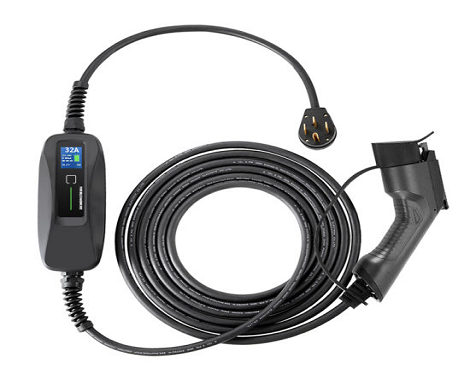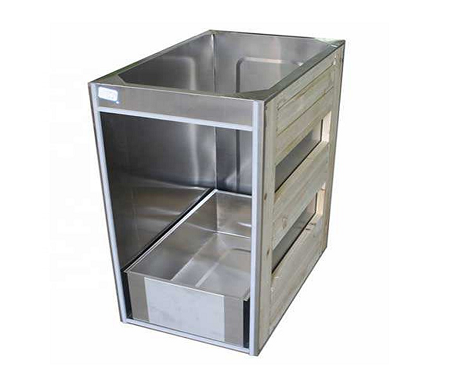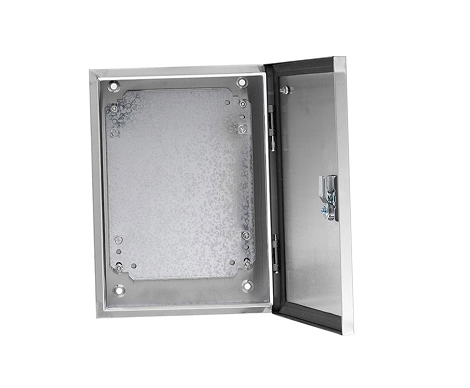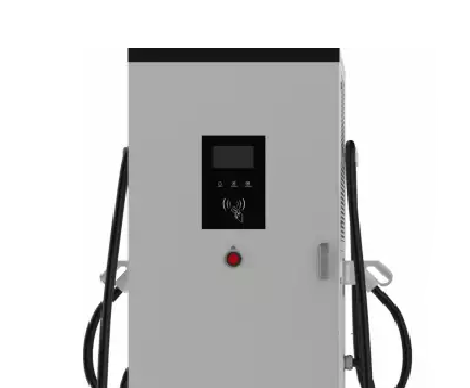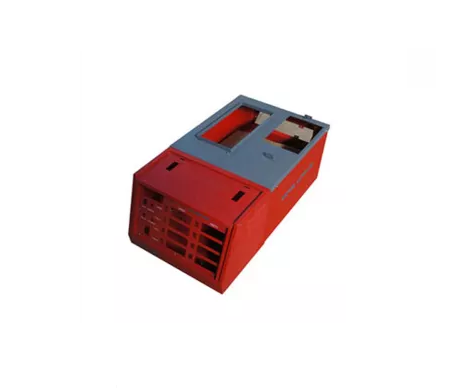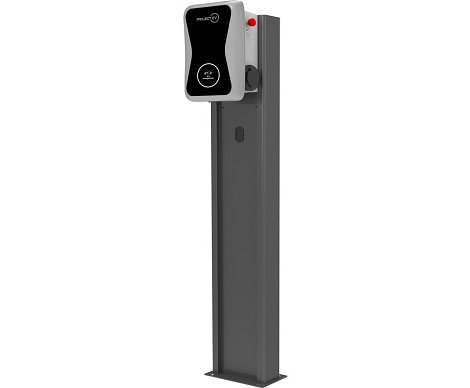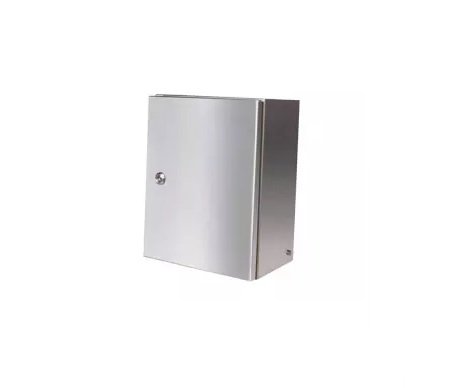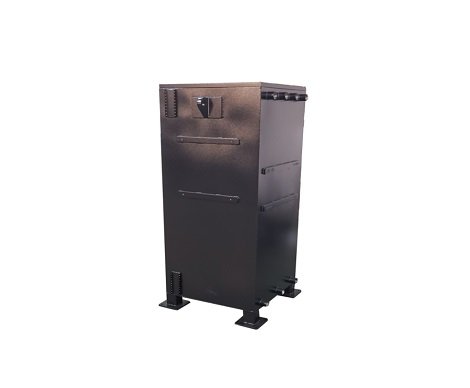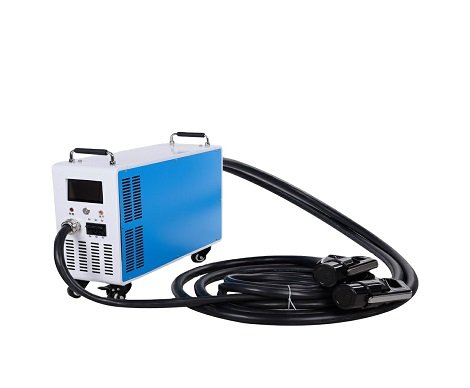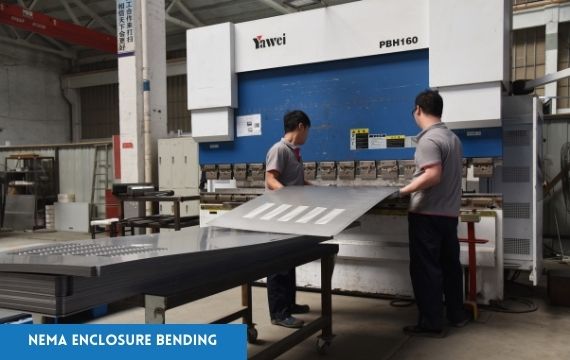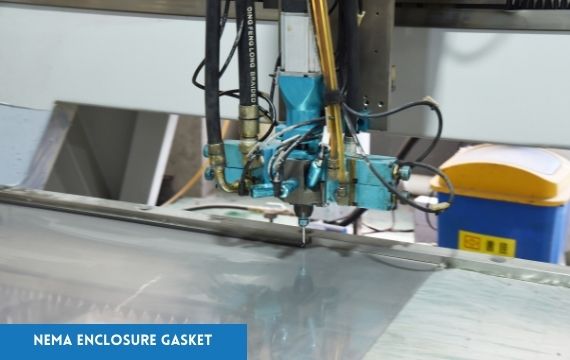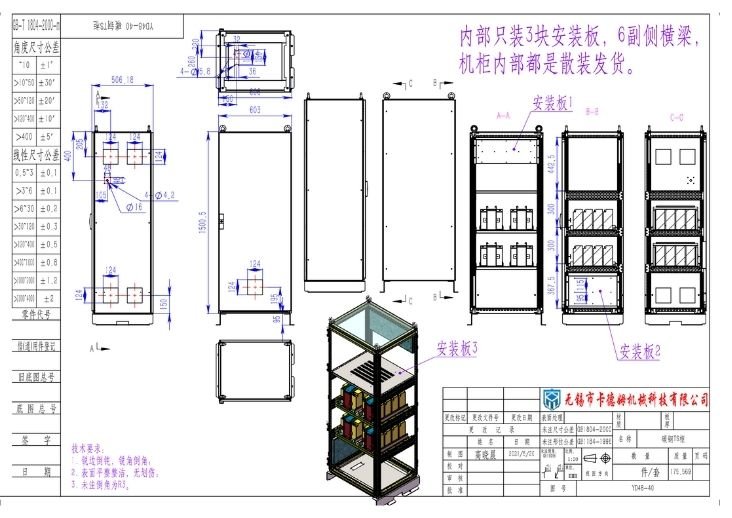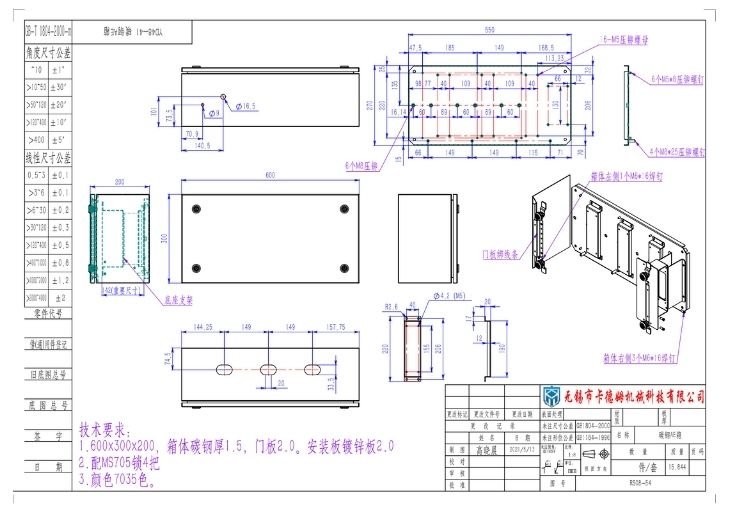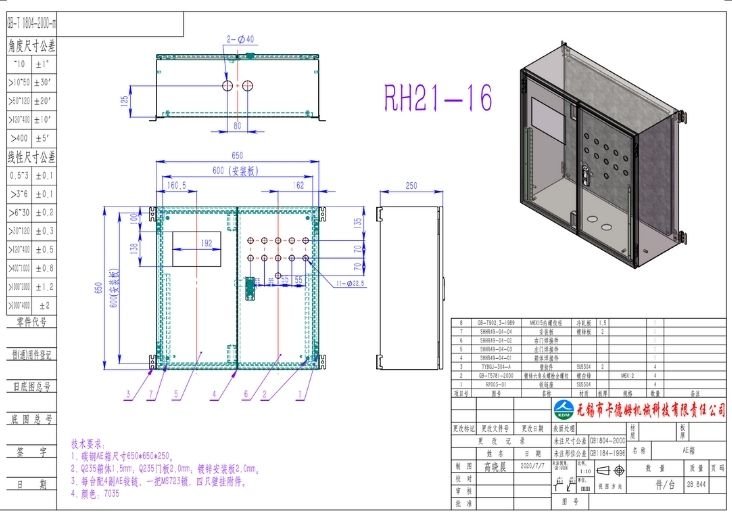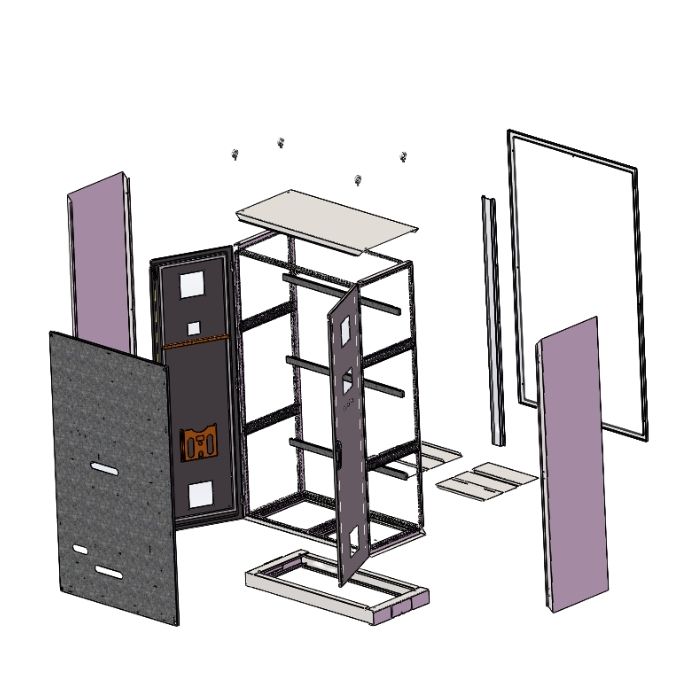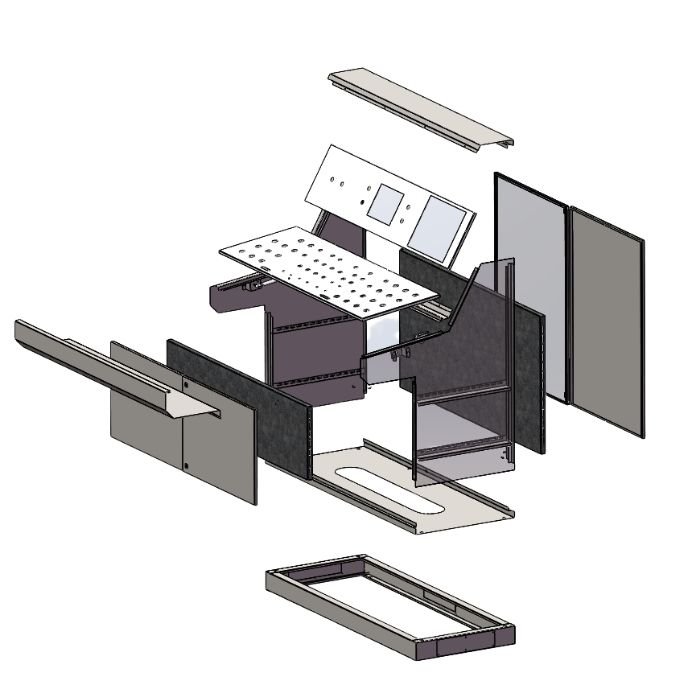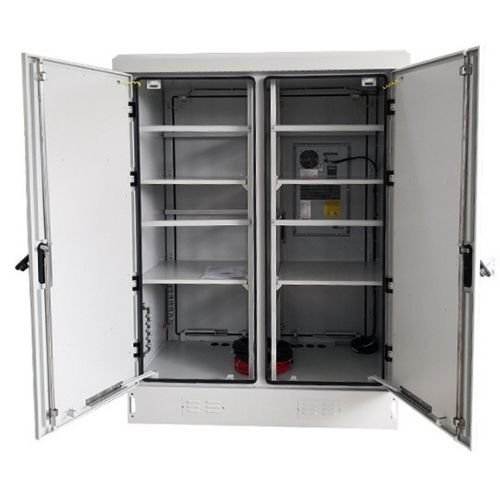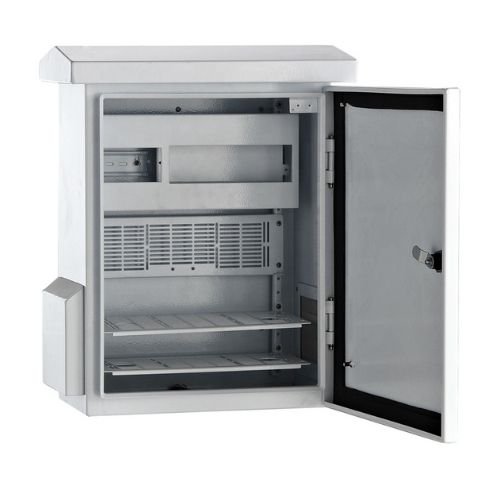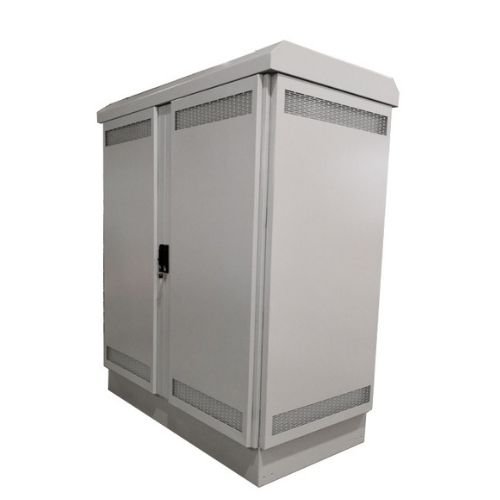- KDM—your prime outdoor EV charger enclosures manufacturer in China.
- We will supply you with a customized and cost-effective protection solution for your EV charger business.
- request your weatherproof EV charger enclosures today!
Your Reliable EV Charger Enclosure Manufacturer from China
KDM EV charger enclosures come in many designs, colours, configurations, installations, and finishes. We offer you countless customization options with features built for any industry and application. Our features include lockable doors, DIN rails, mounting brackets, cable knockouts, vents, and more. You can also request an EV charger enclosure with IP and NEMA ratings for dust-tight and waterproof qualities. We also offer advanced corrosion protection and anti-tampering options. KDM EV charger enclosures are certified and tested, guaranteeing you the quality you are looking for.
KDM professionals are dedicated to manufacturing well-designed enclosures, fulfilling your requirements, and providing excellent customer service even after-sales. Below you can check out some examples of the EV charger enclosures we offer.
KDM EV Charger Enclosure Series
NEMA 13 EV charger enclosures protect against airborne dust and lint, splashes of water, coolant seepage, and other industrial and outdoor hazards. This enclosure does not rust and prevents damage to your electric vehicle chargers. We can also manufacture EV charger enclosures with other NEMA ratings.
Carbon steel EV charger enclosures provide the perfect protection for EV chargers in outdoor and indoor locations. Carbon steel withstands humid, non-corrosive environments. They are safe to install on the road, motorway, or parking lot. Also called mild steel, carbon steel is cheap and will help you save on expenses.
IP67 EV charger enclosures are completely dustproof, waterproof, and highly durable. The rating of IP67 means that the enclosure can withstand strong jets of water from all sides. This means that these EV charger enclosures are ideal for the outdoors. KDM can also manufacture EV charger enclosures with other IP ratings for you—up to IP68.
Single-door EV charger enclosure is the most common design of EV charger enclosures. They are simple and easy to operate. You can choose the hinge and the lock that you want on the single door. We can also make this door vented and include a window in it if you want. Finally, we can silk-screen or engrave your EV charger logo or instructions on the door.
We offer IP-rated and NEMA-rated weatherproof EV charger enclosures. They will protect your EV charger from rain, windblown dust, sudden temperature changes, direct sunlight, ice formation, etc. Our rainproof and dust-tight enclosures will keep your electric vehicle charging station working at its best.
Besides locks, windows, and other features, we can supply vented EV charger enclosures. Vented enclosures protect electrical components from overheating. Vents can be used in outdoor and indoor EV charger enclosures. You can choose passive ventilation louvered breathers or active fans—depending on the climate.
KDM offers wall-mounted EV charger enclosures with secure installation brackets. You can install these enclosures anywhere; they are flexible in mounting locations. This is perfect for personal home EV charging stations—your customers can simply mount the enclosure on their garage doors. We also offer pole-mounted and tower-mounted designs for parking lots.
You can also request free-standing EV charger enclosures for large EV chargers, or if you want to house other appliances inside the same enclosure. You choose the dimensions, and we will gladly manufacture the right product for you. We can add other features, like dividers and cable management systems as well.
KDM supplies many types of coatings for EV charger enclosures, including wet coats and powder-coating, which is the most popular. You can choose not only the color of your EV charger enclosure but the finish and the texture as well. You can create a recognizable look for your branded EV chargers, or simply make an EV charging station look good. Also, a powder coating can enhance the corrosion-resistance qualities of your EV charger enclosures.
Aluminum EV charger enclosures are durable, lightweight, impact-resistant, and resistant to corrosion. A thin layer of oxide protects aluminum from rusting, so these EV charger enclosures are perfect if you want to install them in humid or marine environments, such as at the coast or near a beach.
EV charger enclosures can support and handle EV chargers with a range of voltages—from low, to medium, to high. High-voltage EV charger enclosures are typically large, have a lot of space inside, and are well protected against impact, explosions, shock, and weather conditions.
Unparalleled Protection
KDM offers unparalleled protection for your electric vehicle chargers. We manufacture enclosures compliant with IP and NEMA ratings, as well include safety features to suit your requirements. We can supply rainproof caps and gaskets to prevent water ingress. Our top-grade neoprene and rubber gaskets are applied professionally to cover every crevice. To protect your enclosure from overheating, we offer solar shields and ventilation. We even offer protection from unauthorized access by installing locks and door alarms. If corrosion is your concern, we offer corrosion-resistant materials and coatings.
We have a large range of protective features to provide security for your EV chargers. Any type of hazard—we’ve got it covered.
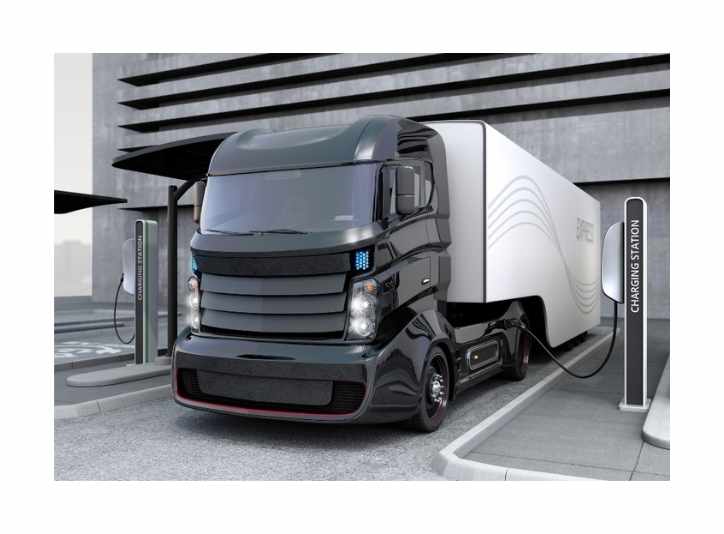
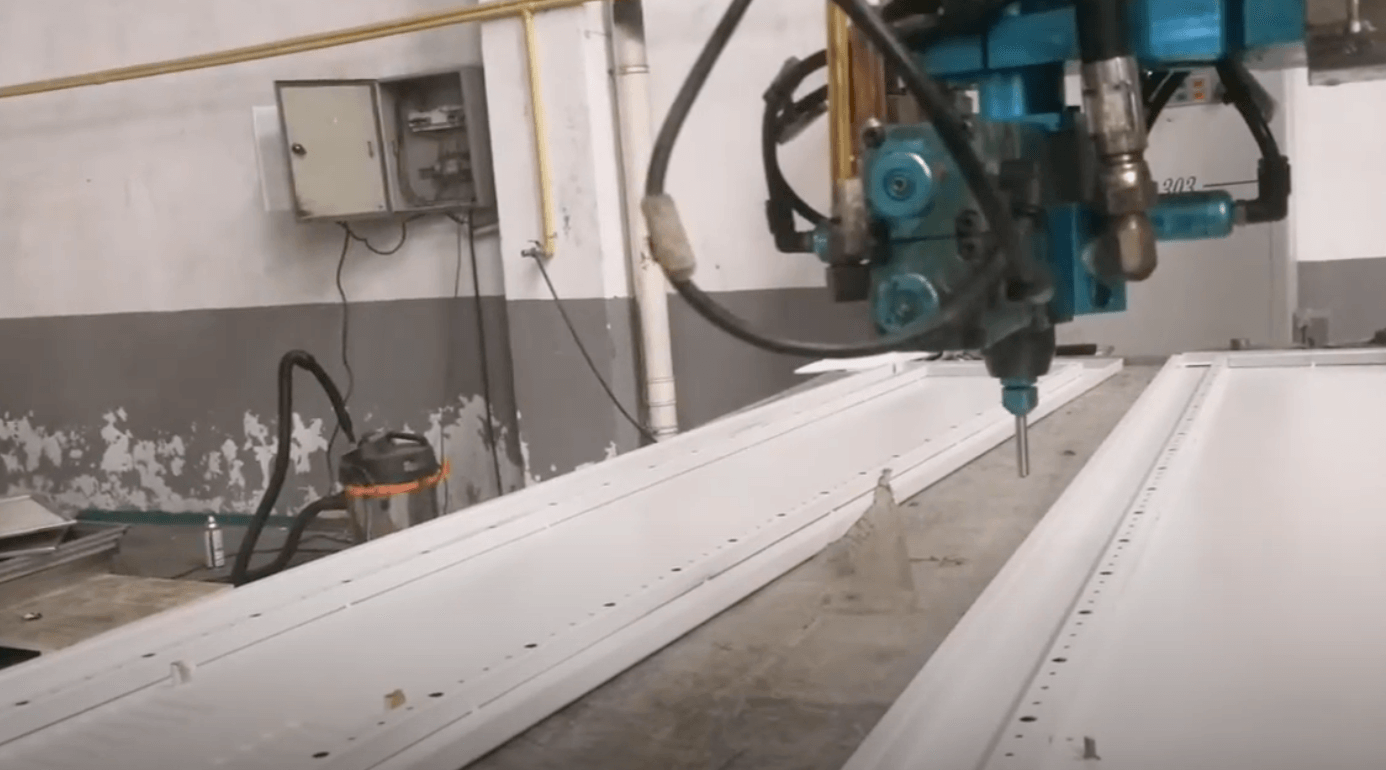
Professionally Designed Enclosures
We offer a variety of design solutions for your EV charger enclosures. We take into consideration your wishes and other relevant information. Our EV charger enclosures have custom cable management systems and cable knockouts, including the large knockout for the main charging cable. In a computer program, our professional engineers will sketch and measure out the perfect enclosure. You can also explore our additional features and accessories to include in your EV charger enclosure design. In our FAQ below, you will be able to read about some of them.
We can design enclosures of any dimensions and configurations. Also, we can add rain caps, windows, lifting eyes, casters, racks, locks, file pockets, etc. Our extensive manufacturing experience allows us to design the ideal enclosure for your application.
Worldwide Shipping
Naturally, being one of the best EV charger enclosure manufacturers in China, we offer shipping to all corners of the world. Our clients are based from around the world, including the USA, Europe, and Asia. We collaborate with brands globally, providing the quality that rivals that of our foreign competitors.
Simply contact us and we will find the perfect shipping solution for your destination. Your EV charger enclosures can arrive by air freight, sea freight, railways freight, or in truck loads—depending on the route. Our electric vehicle charger enclosures perform equally well in all types of conditions and all climates. We will also manufacture enclosures according to your local country regulations.
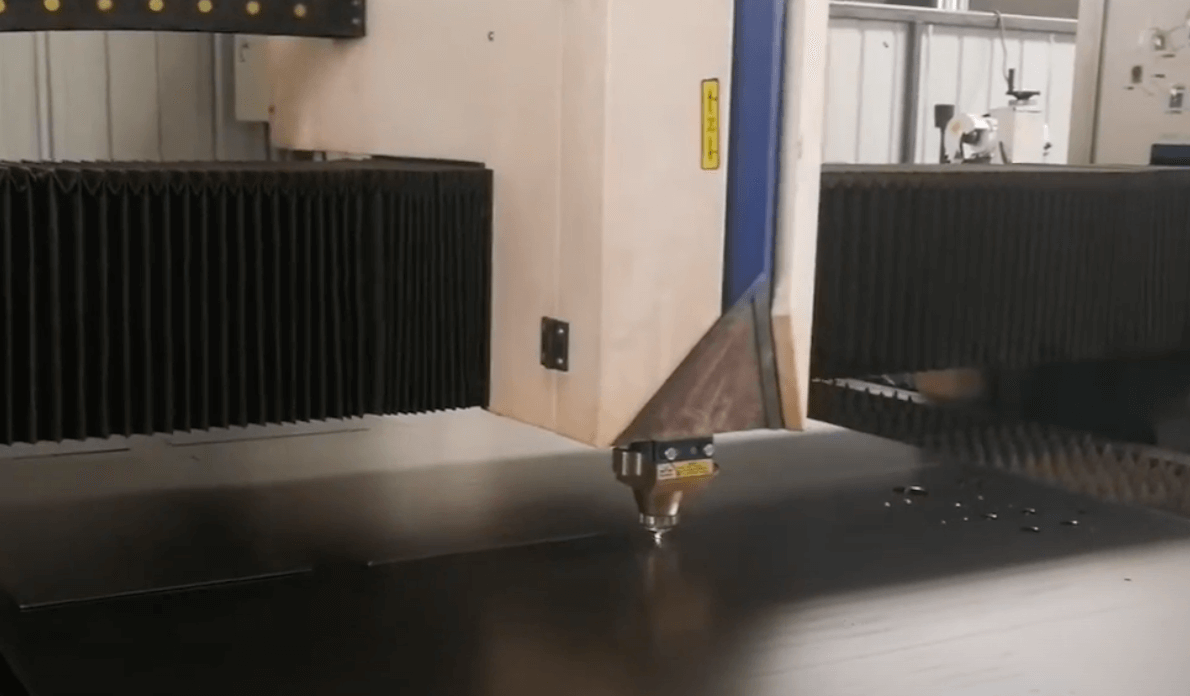
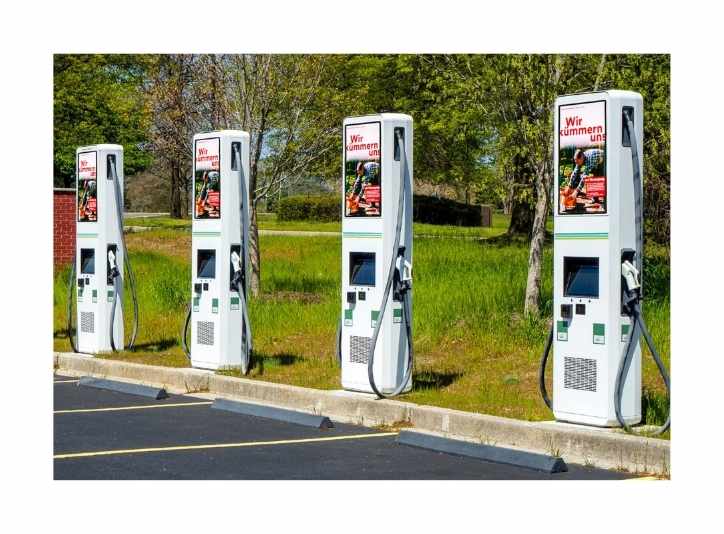
Certified Quality
At KDM, we are dedicated to providing quality products. This is why we comply with safety regulations, product standards, and testing. Over the years, we have acquired ISO 9001:2015, RoHS, NEMA, IP, UL, and other certifications. We have been manufacturing electrical enclosures for more than 10 years, allowing us to learn everything about the industry and its standards.
If there are additional regulations at your local municipality, we will gladly follow them. Our advanced equipment enables us to manufacture the best EV charger enclosures according to your requirements. At KDM, we examine quality during the manufacturing process, as well as facilitate third-party testing. We vouch for the high quality of our quality.
Manufacturing Your EV Charger Enclosures
KDM EV charger enclosures can be made in compliance with any regulation to withstand dust, rain, rusting, snow, and more. Using our innovative equipment, we can fulfil any custom requirement for your EV charging business.
Your EV charger enclosures can be made from aluminum, stainless steel, carbon steel, galvanized steel, and fiberglass. Our manufacturing process includes laser cutting, welding, bending, polishing, foaming, assembly, plastic powder coating, and silk-screening. After your enclosure is manufactured, we thoroughly inspect it for quality. Then, we carefully package it before shipping to your destination. Our experience, collaboration with top-notch brands, and streamlined production make us a successful company. Contact us today to start a partnership for EV charger enclosures.
Why KDM is Trusted By Over 1000 Global Clients
- Enclosure Manufacturing
- 2D Drawing
- 3D Drawing
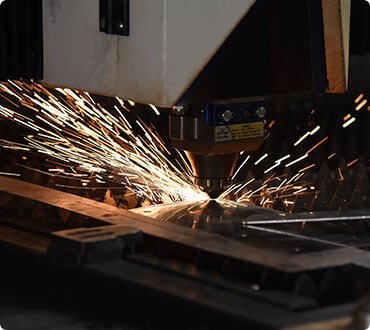
4000W high performance laser cutting machine, +/- 0.05mm accuracy. No burr, no scratching.
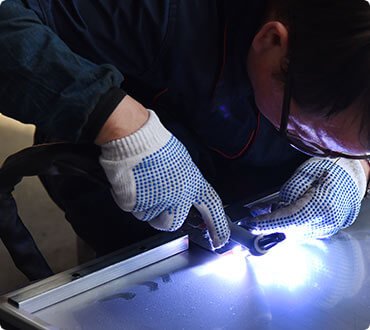
Multi-Functioning flexible welding equipment, high accuracy, no deformation.
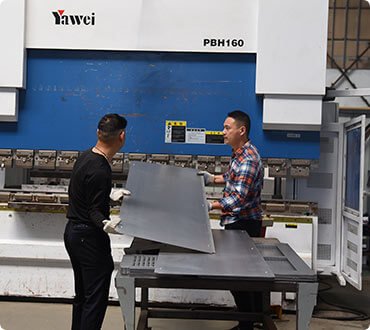
+/- 0.5mm bending precision, smooth surface without bending marks.
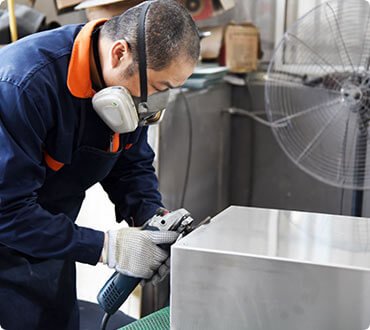
10+ welding experienced workers, perfect overall appearance.
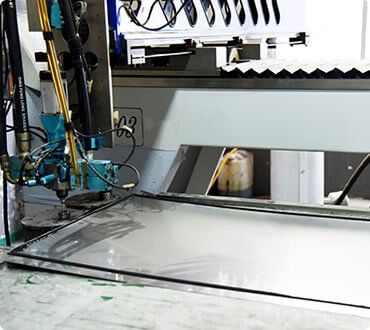
High speed and accuracy foaming machines, fast and qualified Gasket
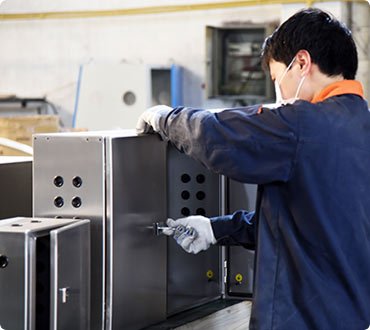
Expert assembling team, consistent assembly quality on every KDM enclosure
Applications
KDM EV Charger Enclosures
EV charger enclosures protect electric vehicle chargers from the weather and tampering. Your enclosures are guaranteed to withstand rain, dust, corrosion, and impact. At KDM, we offer an unparalleled range of additional features to create the perfect product for your business. KDM is your one-stop EV charger enclosures manufacturer in China.
Below you can learn more about EV charger enclosures and the features we offer!

EV charger enclosure
The Ultimate FAQ Guide to EV Charger Enclosures
What materials are used to manufacture EV charger enclosures?
All materials used for regular electrical enclosures can be used for EV charger enclosures.
This includes carbon (mild) steel, galvanized steel, and stainless steel—most commonly of the grades 304 or 316.
Carbon steel is usually duller than stainless steel.
It is also magnetic and more malleable since it only has iron and carbon in its mixture.
This steel is also prone to corrosion.
However, carbon steel is also cheaper than other types of steel, so it is perfectly suitable for indoor or residential EV chargers.
Stainless steel is created by adding chromium, nickel, and molybdenum to carbon steel.

Stainless steel EV charger enclosure
Steel grades 304 and 316 differ in the ratio of these additives.
Grade 316 is slightly stronger and more resistant to saline and acidic water than grade 304 is.
However, grade 304 is cheaper and more common than grade 316 is.
Stainless steel is perfect for outdoor EV charger enclosures. Galvanized steel is coated with a protective layer of zinc that prevents corrosion.
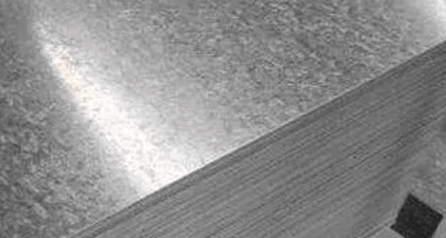
Galvanized steel
It is more expensive and heavier than stainless steel, but it is also very impact-resistant.
Also, aluminum alloys are commonly used to manufacture top-quality EV charger box cabinets.
Just like steel has grades, aluminum alloys have series numbers: the 5052 or the 6061 series.
Alloy 5052 is more weldable, meanwhile, 6061 has a higher resistance to corrosion and is more expensive.
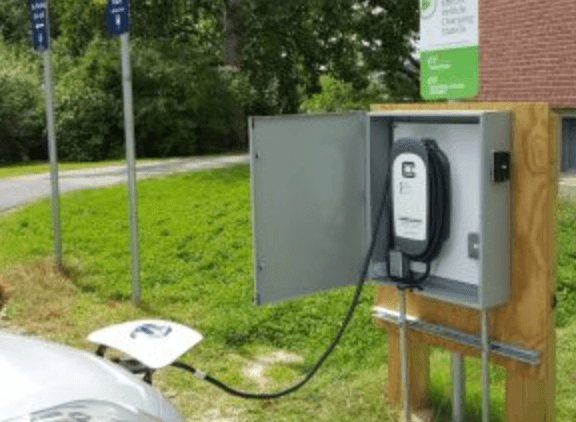
Aluminum EV charger enclosure
This material is resistant to solvents, petrochemicals, some acids, most sulfates, and nitrates.
Fiberglass can also be used to manufacture EV charger enclosures.
It is very strong, can dissipate heat, and insulates electricity.
It is made from glass fibers placed in plastic.
Polycarbonate can also be used as material for EV charger enclosures.
Polycarbonate is strong, resistant to corrosion, but not as tough against impacts.
If you would like to learn more, send in your inquiry now for a consultation!
Who can use EV charger enclosures?
EV charger enclosures are useful in a variety of ways and applications.
These include workplaces, retail, commercial parking, fuel retailers, fleets, charging network operators, and residential places.
Workplaces can use EV charger enclosures to provide their employees the convenience of charging their electric vehicle at work.
Of course, this is only applicable if any of the workers have electric vehicles.
Retail places can set up EV charging stations with EV charger enclosures to attract wealthy customers driving Teslas.
This would be a great way to set your business apart from others.
Commercial parking is a logical place for EV charger enclosures to be.
Your parking can introduce innovative EV charging to attract a new target audience.

EV charger enclosures in commercial parking
Fuel retailers, such as gas stations, can also attract new, high-value customers driving electric vehicles by setting up EV chargers and enclosures.
This will present you as an advanced and eco-friendly company that many will approve of.
Fleets, such as corporate taxi fleets, logistics shipping fleets, and transit bus operators can build a sustainable business by electrifying their vehicles.
In this case, these businesses would need EV charging stations with EV charger enclosures.
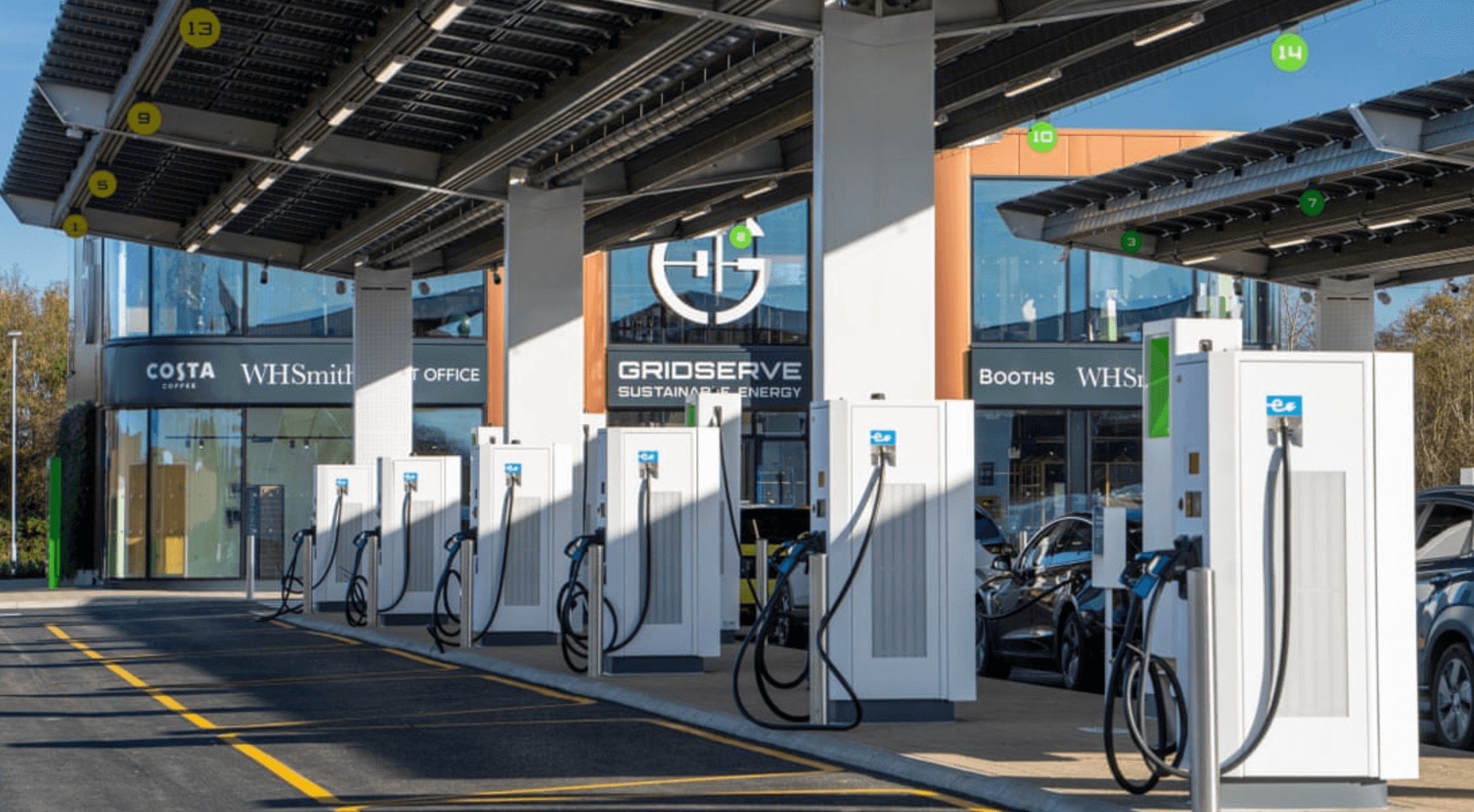
Fleet EV charger enclosures
Charging network operators must get EV charger enclosures to grow their EV charging hardware.
KDM can help you boost your business with our weatherproof EV charger enclosures.
Finally, residential places can use EV charger enclosures for personal charging.
The EV charger enclosure can be wall-mounted outside the garage for regular recharging of the owner’s electric vehicle.
What is the difference between commercial and residential EV charger enclosures?
EV charger enclosures can be used in commercial and in residential settings.
Commercial EV charger enclosures are durable, weatherproof, and shockproof.
EV chargers also have load balancing capabilities to allow multiple chargers to work together at any commercial location.
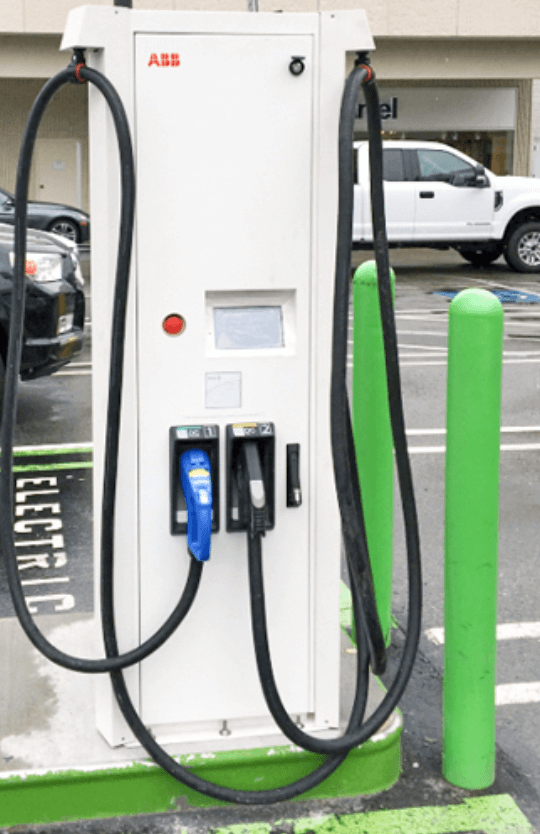
Commercial EV charger enclosure
These enclosures are large and can have multiple compartments.
Residential EV charger enclosures, on the other hand, are compact, more aesthetic, and not as rugged as commercial ones.
Residential EV charger enclosures can even be indoor enclosures housed in a garage.
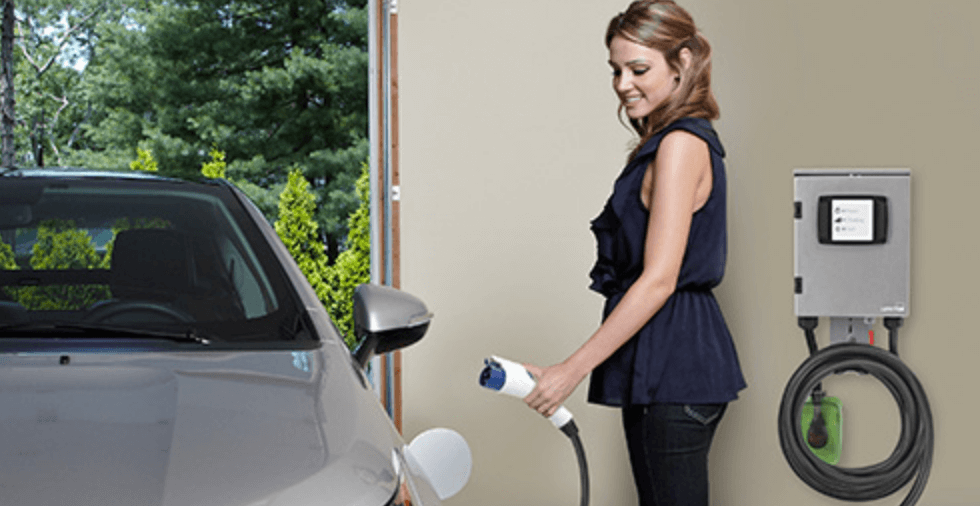
Residential EV charger enclosure
Can EV charger enclosures have touchscreen panels?
Yes, KDM can manufacture EV charger enclosures combined with computer kiosk cabinets with LCD monitors and user interfaces.
This design would present as an all-in-one solution for your EV charging business.
Your customers can easily set up, pay for, and monitor the charging of their electric vehicles.
We can install a panel on both free-standing and wall-mounted EV charger enclosures.
Embrace innovation with our monitors and enclosures.
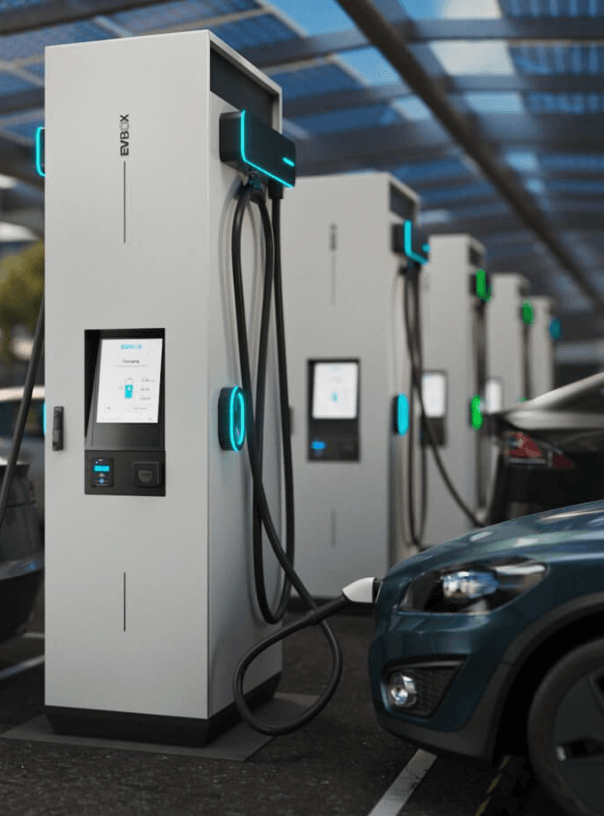
EV charger enclosure with user interface monitor
What are some features specific to EV charger enclosures?
Installing electric charging stations outdoors presents many hazards, and an EV charger enclosure needs to protect from all of them.
EV charger enclosures are leak-proof, water-proof, dust-tight, and explosion-proof.
They offer lightning protection, grounding protection, and high and low-temperature protection.
For this, EV charger enclosures have special weatherproof gaskets, sun shields, rain caps, corrosion-proof powder coating, vents, and fans.
Waterproof EV charger cabinets have special rubber or neoprene gaskets to protect the enclosure from water, oil, or coolant ingress.

Gaskets for EV charger enclosures
Ventilation—fans or breathers—helps prevent overheating of electrical components inside your enclosure.
Passive vents or breathers include holes, mesh, and louvered vents.

Passive louvered breathers
Active vents, such as radiating fans or door fans, help cool the enclosure more intensely.
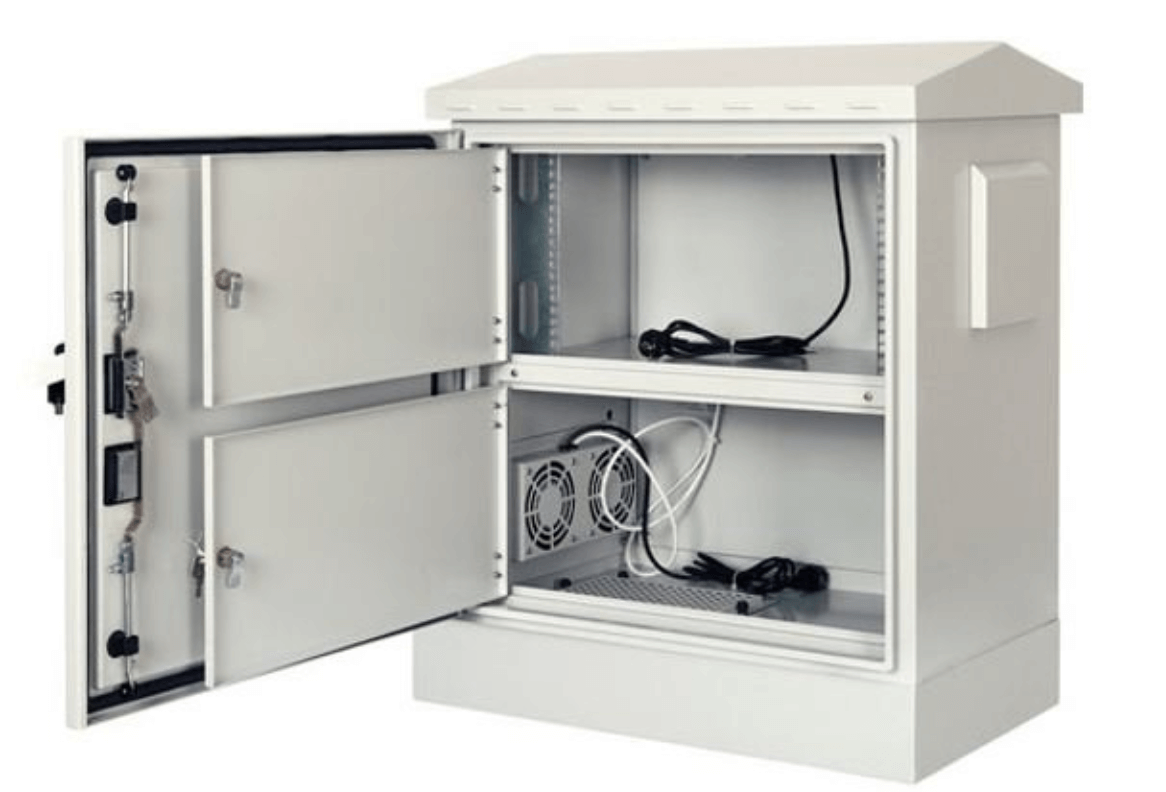
Vented EV charger enclosure
Plus, the vents can be further upgraded to air conditioners and heat exchangers.
You can also choose to include fan kits, filters, and gas vents.
Windows help personnel examine the electrical components in a quick and non-invasive way.
Also, we can install clear window-like covers on small EV charger outlet enclosures.
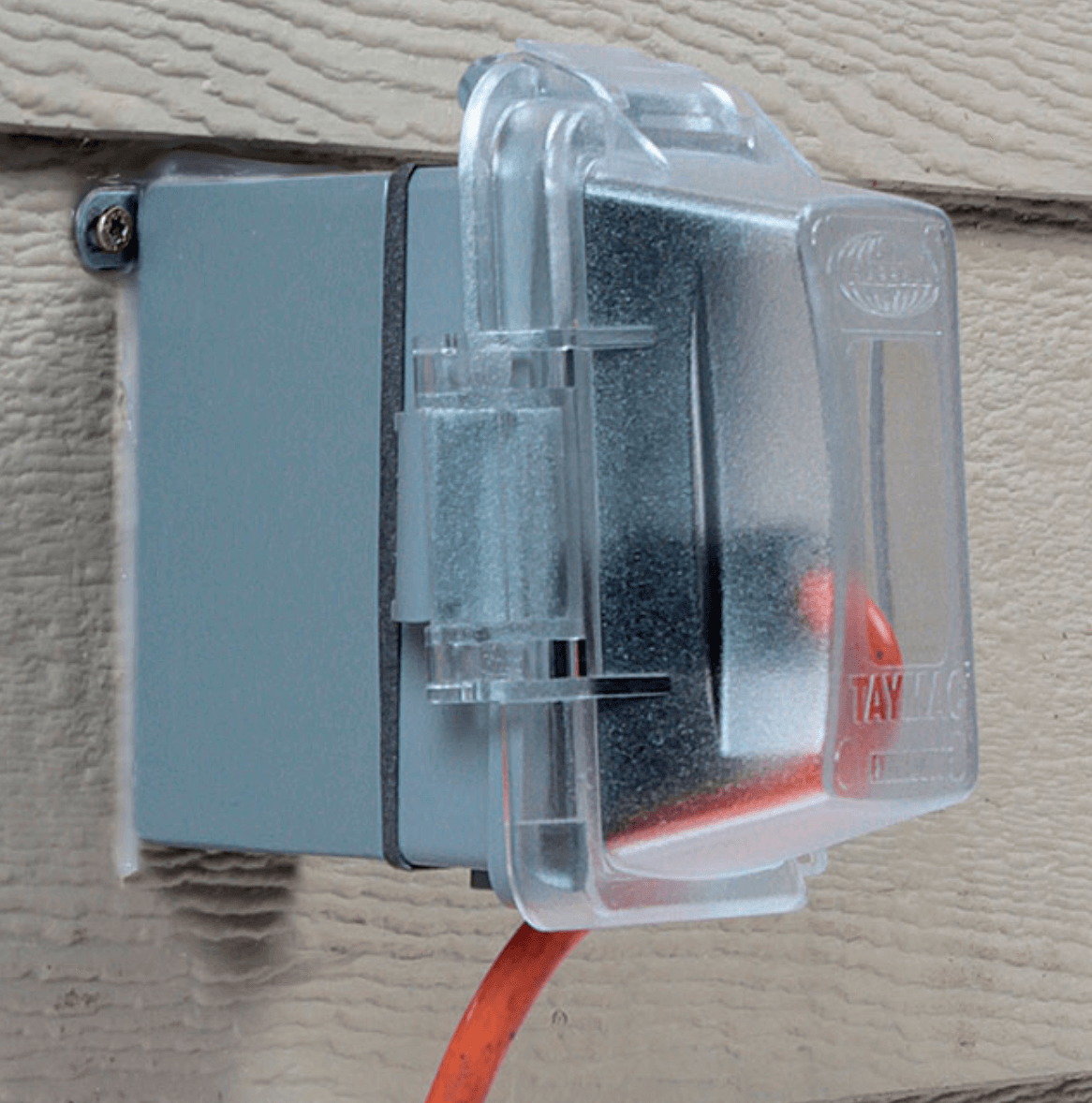
Small outlet EV charger enclosure with a clear cover
Hinged doors control how and how much the door, cover, or access panel of an EV charger enclosure opens.
We offer regular doors, up-lifting covers, and down-pulling covers.
Residential EV charging station enclosures can have doors that lift upwards or are lowered down to expose a charging outlet.
In this case, the cable is separate from the enclosure and is plugged into the outlet.
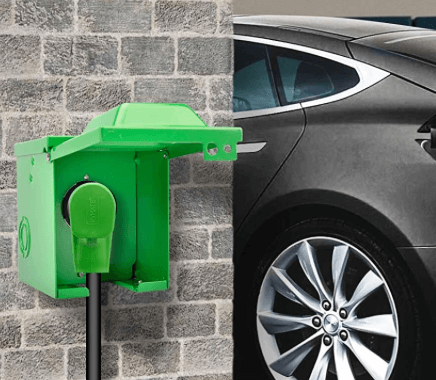
Residential outlet EV charger enclosure
This solution is compact and intuitive in use.
We can even manufacture small NEMA plug enclosures that cover an outlet.
To prevent unauthorized access, EV charger enclosures may also have lockable doors with key locks, padlocks, electronic locks, and hasps.

Lockable EV charger enclosure
Furthermore, your EV charger enclosures can have cable knockouts, sun shields, DIN rails, lifting eyes, insulation, spill containment, rain caps, and any custom feature you need.
Cable knockouts allow cables to be connected to your EV charger enclosure, as well as for the main cable to exit the enclosure for customer use.

EV charger enclosure with circular knockouts
EV charger enclosures often have many cable knockouts, including a large knockout on the bottom of the enclosure.
This is where the main charging cable goes through.
If this knockout is on the side or on the front, then we can include a hood to protect the cable from the rain.

Gasketed bottom knockout for the main cable
We can include rain hoods for the cable ports as well.
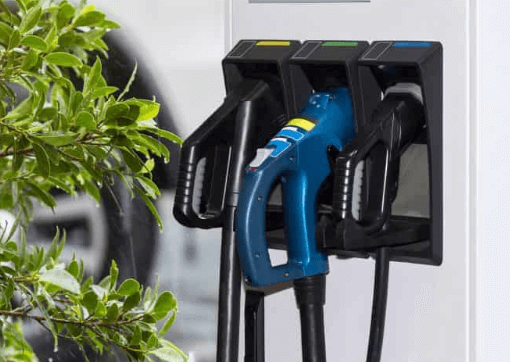
Rain hood
Also, EV charger enclosures could have LCD monitors and slots for wireless paying devices to allow customers to pay right at the enclosure kiosk.
There could also be an LED indicator to show the levels of charging, and let your customers know when charging is complete.
A sun shield protects your EV charger enclosure from direct sunlight that would heat up the enclosure.
A solar shield is basically another layer on top of an enclosure that creates a shade to keep the enclosure and its electrical components cooler.
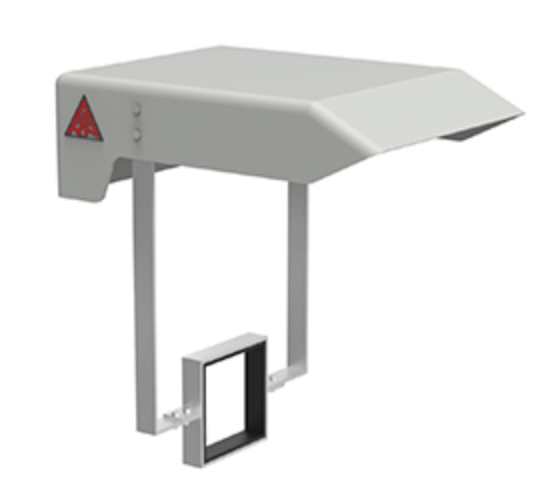
Solar shield
Also, DIN rails are important features for any enclosure.
These are metal rails with places for mounting circuit breakers and control equipment inside enclosures.
Similarly, cable management systems such as cable entry frames and clamps serve to keep wires organized for easier installation and maintenance.
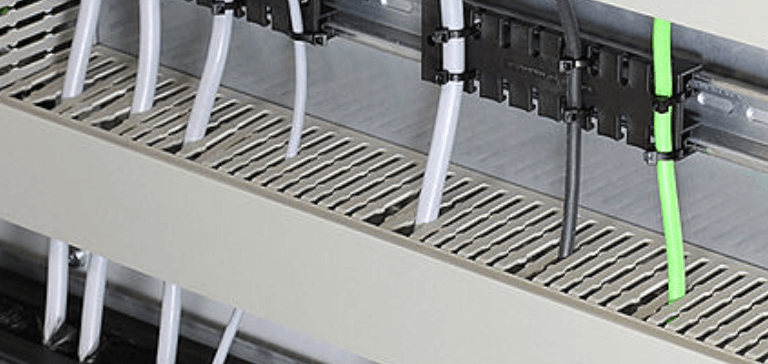
Cable management system
You can choose DIN rails and cable management systems to help you organize all the wiring, if you need it.
Also, you can select to include hooks or grooves at the top or the sides of your EV charger enclosure for easy storage of the charging cable.
The cable can be simply hung up on the hook and bent around the enclosure.
Lifting eyes help transport your free-standing, floor-mounted, or pad-mounted EV charger enclosures.
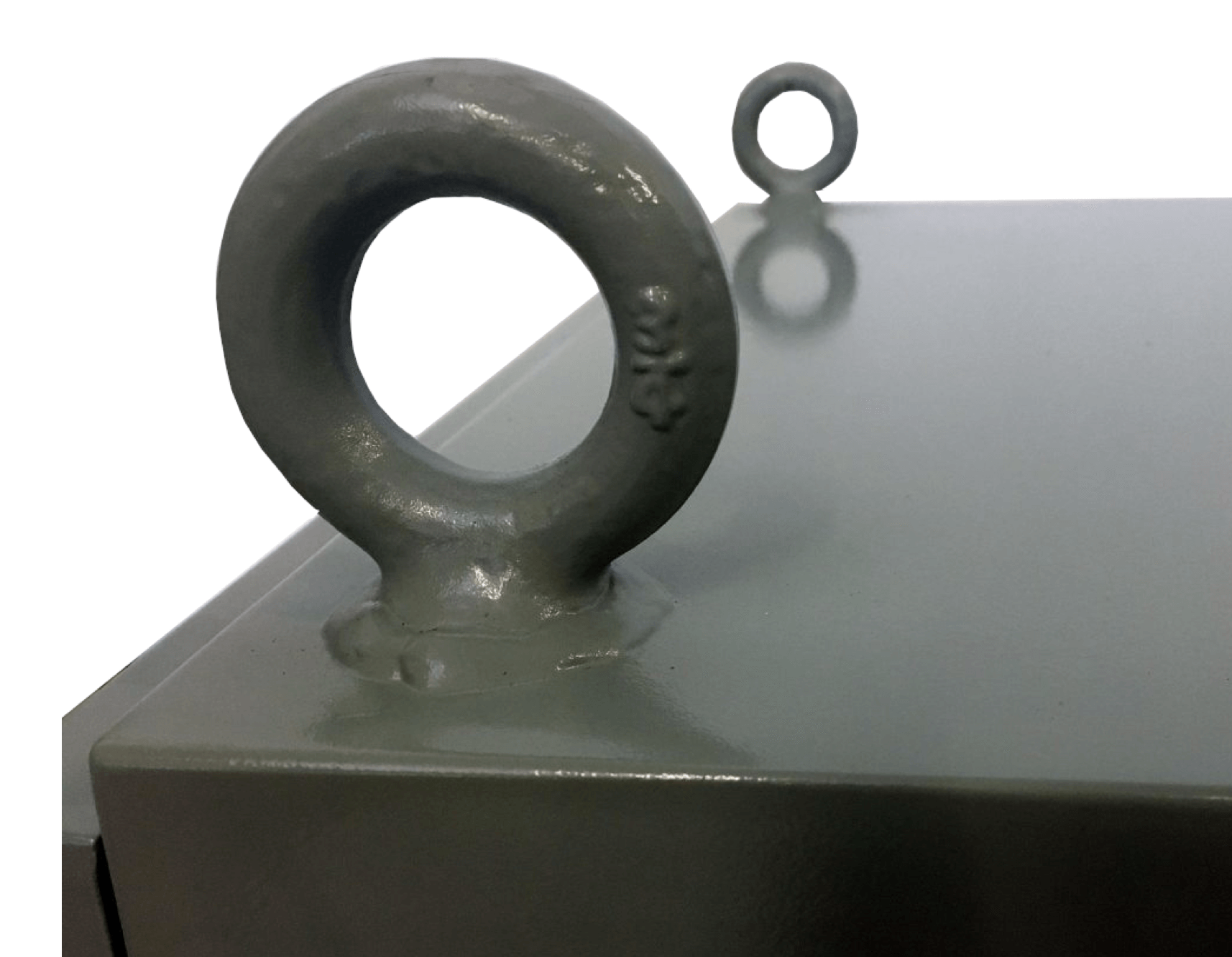
Lifting eyes
Insulation is a safety feature meant to maintain the inside temperature of an EV charger enclosure.
This could mean preventing excess heat, but also preventing excess cold.
A rain cap is a slanted rooftop-like piece on the top of your outdoor EV charger enclosure.
Any rainwater will simply roll off the roof and protect the enclosure from water ingress.
Naturally, EV charger enclosures also have service access panels to facilitate maintenance of the EV charger devices.
To learn more, feel free to contact us for more information!
We will also provide any custom feature that you request.
Can there be enclosures for wireless EV chargers?
Yes, wireless EV chargers are common for electric buses.
There are panels that the vehicle would park over and they would charge the vehicle magnetically.
In this case, EV charger enclosures are still necessary, and they are not too different from EV chargers with cables.
There would just be a pipe that protects the cable running from the enclosure to the wireless charging panels.
The pipe would need to be reinforced to protect the cable from the weather, corrosion, and heavy impact.

Wireless EV charger enclosure
What charging infrastructure is often housed in an EV charger enclosure?
There are 3 main types of EV chargers.
They include AC level 1, AC level 2, and DC fast charger.
AC level 1 charges with a rate below 2kW, 120 V, and about 14 Amps.
Their charging time equals 3-5 miles per hour, which is suitable for residential applications.
AC level 2 charges with a rate between 3 and 10 kW, up to 240 V, and 80 Amps.
Their charging time equals 12-60 miles per hour, which is suitable for residential and commercial applications.
DC fast charger operates with charge rates between 20 and 120 kW, up to 480 V, and more than 100 Amps.
Their charging time equals 80 miles in 20 minutes, which is suitable for commercial applications.
The vehicles that can be charged with these devices are PEV-40, AEV-100, and AEV-300.

EV charger enclosure infrastructure
How can you test the quality of EV charger enclosures?
Just like power supply enclosures, EV charger enclosures need to be tested for a variety of concerns.
Ensuring the quality of your EV charger enclosures also ensures the stable functioning of your electric vehicle charging station.
Typically, there are several aspects that are tested in EV charger enclosures.
These tests include temperature rise limits, dielectric property tests, short circuit resistance, and degree of protection.
The temperature rise limits test examines the durability and reliability of the EV charger enclosure under conditions of extreme heat or extreme cold.
Excessive temperature causes premature aging of your EV chargers, resulting in their operational failure.
Conducting this test helps the manufacturer select the perfect option for your EV charger enclosure.

Quality control of an EV charger enclosure
Based on this information, your manufacturer can advise the use of certain materials, and ventilation or heating systems.
The enclosure should increase the durability or your EV chargers by improving the temperature limits.
The dielectric property test examines how well the insulation of the EV charger enclosure performs.
Here, insulation means grounding and safety features protecting from short circuits and other hazards related to electricity.
This test also helps in determining the maximum operating voltage.
For this test, we use an industrial frequency of 50Hz, which is in the form of voltage waves.
These waves stimulate a lightning strike.
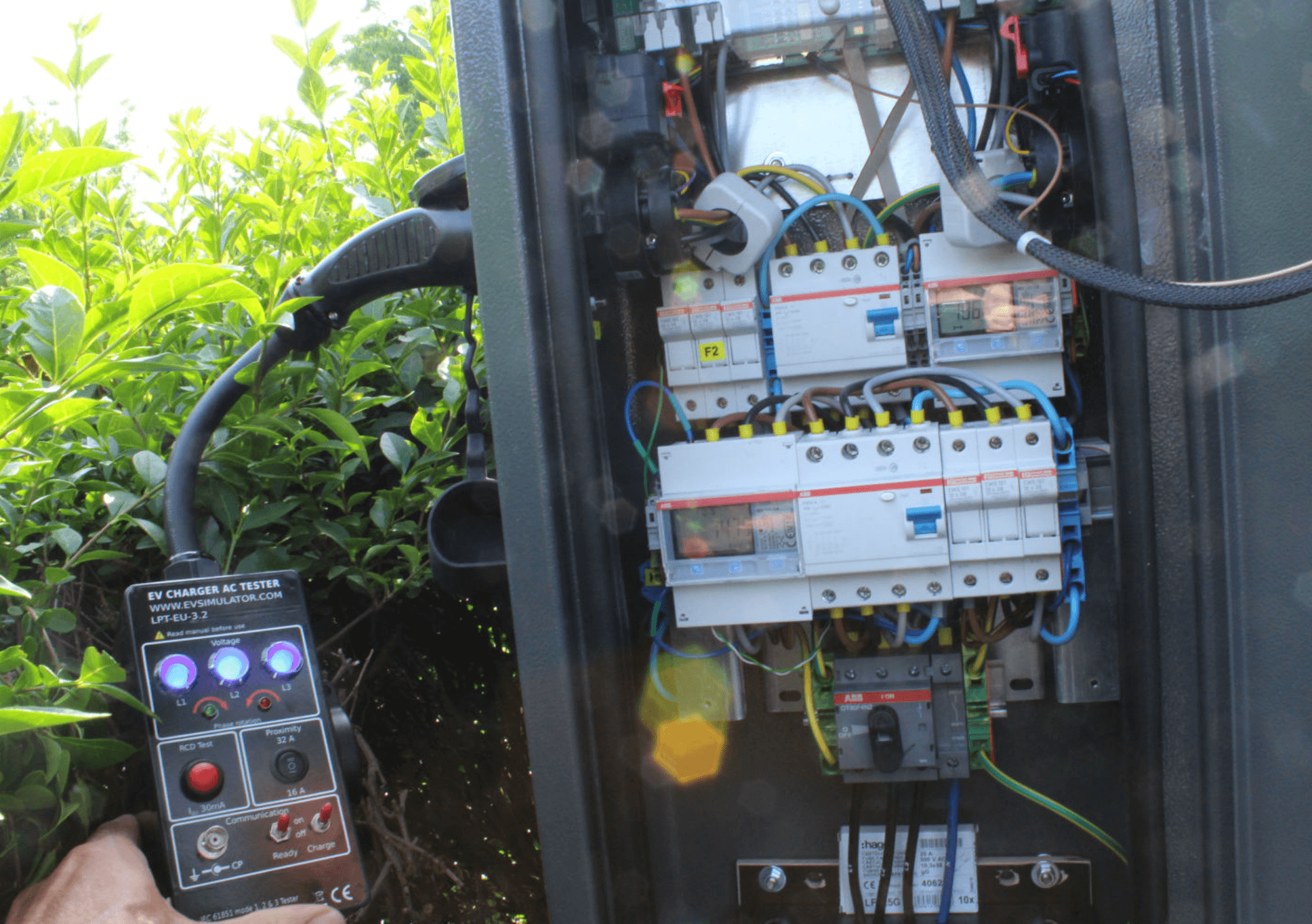
Testing an EV charger enclosure
Short-circuit resistance helps determine the resistance of the EV charger enclosure to electrodynamic and thermal stress.
This may include anti-fire or explosion-proof properties, which is especially useful for large, multi-charger EV charger enclosures.
Degree of protection testing has to do with IP rating guidelines.
This test determines the level of prevention of dust and water ingress into your EV charger enclosure.
Of course, there is a large range of other quality tests we or a third party can carry out, but these are the main ones.
Gaskets can be separately examined, NEMA, UL, and CE regulations can be followed, impact resistance can be inspected as well.
We carefully test all aspects of your enclosure to ensure its safety and high quality.
Do EV charger enclosure cabinets have voltage limits?
Yes, most EV enclosures have a voltage limit.
The voltage limit allows for proper and safe handling of your EV charger and other electrical components.
This helps minimize excess charging, which can damage the cable or the electric vehicle.
Also, it helps optimize the size of the enclosure that you need for cost-effective manufacturing.
There are three categories of EV charger enclosures: low-voltage, medium voltage, and high voltage.
The low-voltage enclosure handles a power supply of up to 600V.
This would correspond to small residential EV charging outlets.
The medium-voltage EV charger enclosure offers a power supply of between 600V and 69kV.
This would correspond to AC level 2 EV charger enclosures.
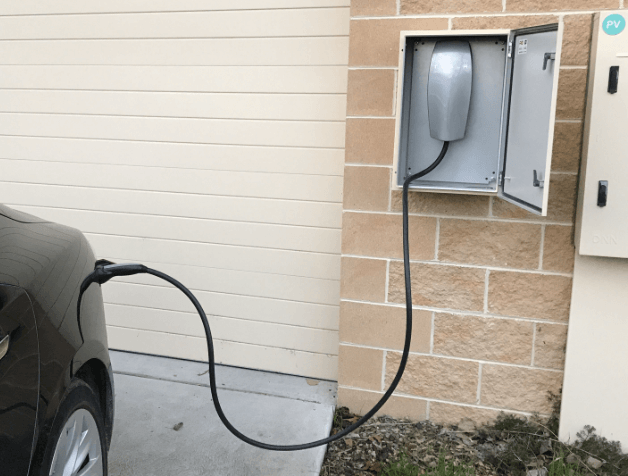
AC level 2 EV charger enclosure
The high-voltage EV charger enclosure withstands the power supply of between 69kV and 230kV.
This would correspond to large DC fast charging EV charger enclosures.
You can use a variety of formulas or tools to calculate the optimum voltage, ampere, and watt numbers to house in your EV charger enclosure.
Let us know what voltage you need your EV charger enclosure to house, and whether you need added circuit breakers, space for parallel current, etc.
How do you choose a DIN rail for an EV charger enclosure?
Choosing a DIN rail can present a challenge, especially if you request a unique, custom design.
However, we can help you select the right type for your EV charger enclosure.
EV charger enclosures need DIN rails to install safety features like circuit breakers, cable management, and other necessary devices that would streamline electric charging.
Some types of DIN rails we will mention include top-hat, G-section, and C-section.
The top-hat design adheres to BS 5584, DIN 4677-3, and EN 5002 regulations.
It is available with either a 15mm depth or a 7.5 mm depth, and 15mm in height.
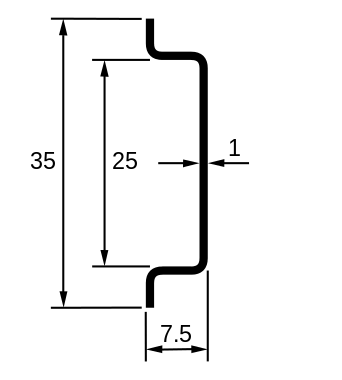
Top-hat DIN rail
The G-section adheres to the BS 5825, DIN 46277-1 and EN 50035 standards.

G-section DIN rail
The C-section can either be C20, C50, C30 or C40.
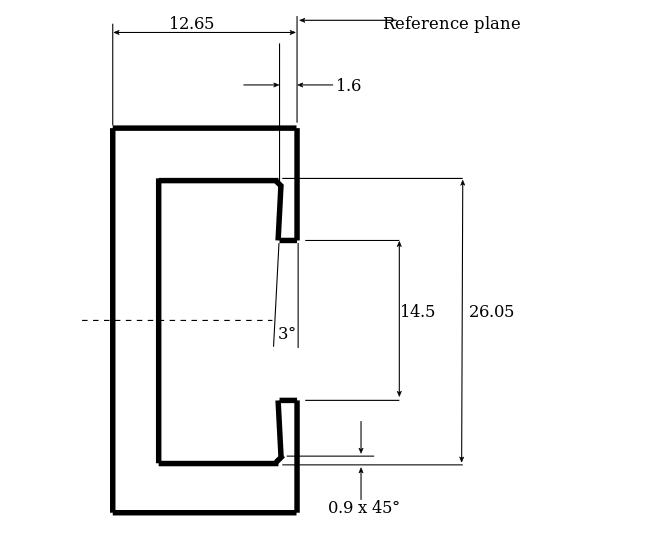
C-section DIN rail
The number suffix on the types is the height of the rails measured in millimeters.
When installing a DIN rail, there are a few things to keep in mind.
Namely, the DIN rail design must be compatible with the enclosure.
Specifically, the enclosure’s cooling methods, protection type, and wiring factors into the design.
DIN rails may be difficult to set up if your enclosure has external fans or forced air cooling.
However, the operating temperature should not affect the physical properties of your DIN rail.
You need to specify the DIN power supplies which protect against overload, short circuit, and overvoltage.
Also, the type of connection that you plan on using determines the kind of DIN rail you select.
Contact KDM professionals for a full consultation!
What is cable management in an EV charger enclosure?
Cable management in an EV enclosure ensures the proper handling of electrical cables and wires.
It secures the right cable in its designated port and ensures adequate sealing of unused cables.

Cable management in EV charger enclosure
Also, cable management helps you keep track of the current load on each cable.
Cable management includes cable trays, cable ladders, cable baskets, and hooks.

Cable hooks in EV charger enclosure and cable holder
Do EV charger enclosures require heating or cooling?
Yes, your EV charger enclosure may need either or both of these.
High working or outdoor temperatures can hurt your EV charger because electrical components are sensitive to overheating.
This is why we offer all sorts of ventilation options for your business, including passive breathers and active fans.
Choosing the right ventilation option depends on the demands of your EV charger.
Likewise, excessively cold temperatures can harm your electric vehicle chargers.
For instance, rubber in low temperatures loses flexibility and becomes brittle, affecting the tightening and sealing of the EV charger enclosure gaskets.
In low temperatures, plastic also becomes brittle and builds up static energy, which is hazardous, especially during outdoor EV charging.
Metal parts also lose their flexibility.
This affects their ability to withstand explosive pressure and high impact.
However, you need to be careful when heating your EV charger enclosure to avoid overheating.
The main methods of heating your outdoor EV charger enclosure are explosion-proof heaters, fan heaters, and PTC heaters.
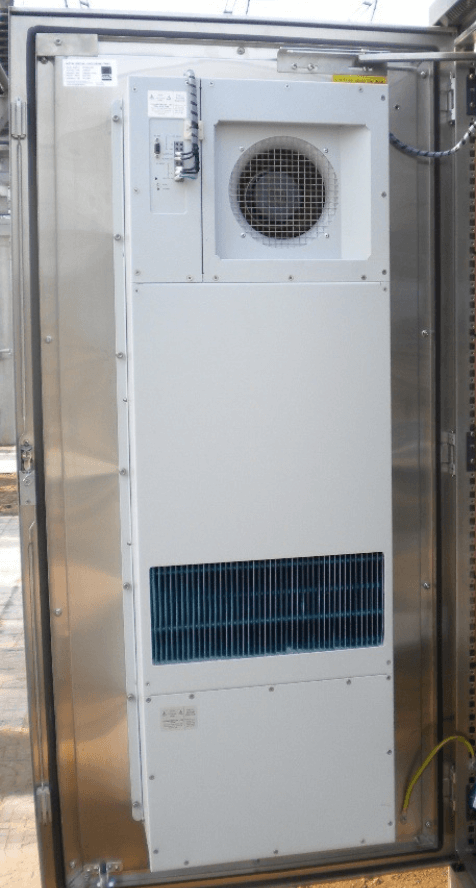
Explosion-proof enclosure heater
Explosion-proof heaters use the traditional way of heating your EV charger enclosure.
Specifically, cold air circulates the heater’s body, which raises its temperature.
As this air warms up, it rises and continues to circulate within the enclosure.
They are also called heat exchangers.
Fan heaters are the simplest form of heating your EV charger enclosures.
They pass electrical current through the heating element, which creates heat.
As this happens, air from within the enclosure flows into the heating element via the fan.
PTC (positive temperature coefficient) heaters use specialized conductive materials that allow current to pass through when the enclosure gets cold.

Enclosure heater
When the temperature starts rising, the material begins inhibiting the current flow, preventing overheating.
You can also choose to insulate your EV charger enclosure.
Insulation plays a critical role in providing the optimum operating temperature for your EV charger box enclosure.
Insulation material should be resistant to heat, fire, and cold.
It should also offer thermal stability and be resistant to ultraviolet radiation—perfect for outside EV charger enclosures.
The best insulation material that you can use for EV charger enclosures
How can EV charger enclosures be grounded?
EV chargers need earth rods to ground the device, protecting it from electric shock.
Grounding is a safety measure in any electric application.
EV charger enclosures can facilitate grounding by providing a knockout at the bottom of the enclosure for a grounding cable or rod.
Also, you can request us to manufacture the earth rod for you.

EV charger enclosure earth rod
What IP or NEMA rating do EV charger enclosures require?
Commonly, electrical enclosures are rated with IP or NEMA.
In IP ratings, the first letter denotes how dust-tight an enclosure is, while the second letter denotes how waterproof an enclosure is.
NEMA, however, has a different rating system, where resistance to corrosion is coded as X after a number, such as in NEMA 4X.
Also, NEMA has other letter codes, and the order of numbers does not necessarily correlate with how much an enclosure protects from.
For example, NEMA 12 is not less protective than NEMA 13; they are just different.

NEMA 4X EV charger enclosure
Indoor EV charger enclosures can be IP44 to IP65, or NEMA 1 to NEMA 4, 5, 12, and 13.
Outdoor EV charger enclosures can be IP65 to IP68, or NEMA 4X to NEMA 9.
If you want to install your enclosures in a cold location, then NEMA 3R would be suitable, with its protection against ice formation.
Industrial locations, or those with risks of corrosion, may require NEMA 4X protection.
Some NEMA ratings have explosion-proof properties, such as NEMA 7.
Outdoor EV charger enclosures need to be dust-tight and protect reasonably well from the rain.
So, choose an IP rating of at least IP65.

NEMA and IP ratings
What are some tips to design an EV charger enclosure?
Below are some points you should keep in mind while designing or proofreading designs for your perfect EV charger enclosures.
1. What application do you need?
It may be residential or commercial.
Also, that would define the size of your enclosure, and whether you need ports for several users.
2. What dimensions (height, width, depth) of an enclosure do you need?
3. What voltage do you need the enclosure to handle?
4. Do you want to house just the outlet, or the cable as well? Will you be housing any other EV charging devices in the same enclosure?
5. Do you need racks, compartments, shelves, knockout holes, separate doors, etc?
6. What environment will your EV charger enclosures be in?
This will help decide on extra features, such as a sun shield, a rain cap, etc.
Also, this will help determine the material of the enclosure—carbon steel or aluminum, for example.
7. How will you be mounting your EV charger enclosure?
This provides information on the type of brackets necessary to use.

EV charger enclosure design
How can EV charger enclosures be mounted?
EV charger enclosures can be free-standing, floor-mounted, pad-mounted, wall-mounted, pole-mounted, and tower-mounted.
Free-standing enclosures and floor-mounted enclosures are perfect for multi-user EV charging stations, such as ones on commercial parking lots.
Free-standing EV charger enclosures could be of any height, width, and depth according to your requirements.
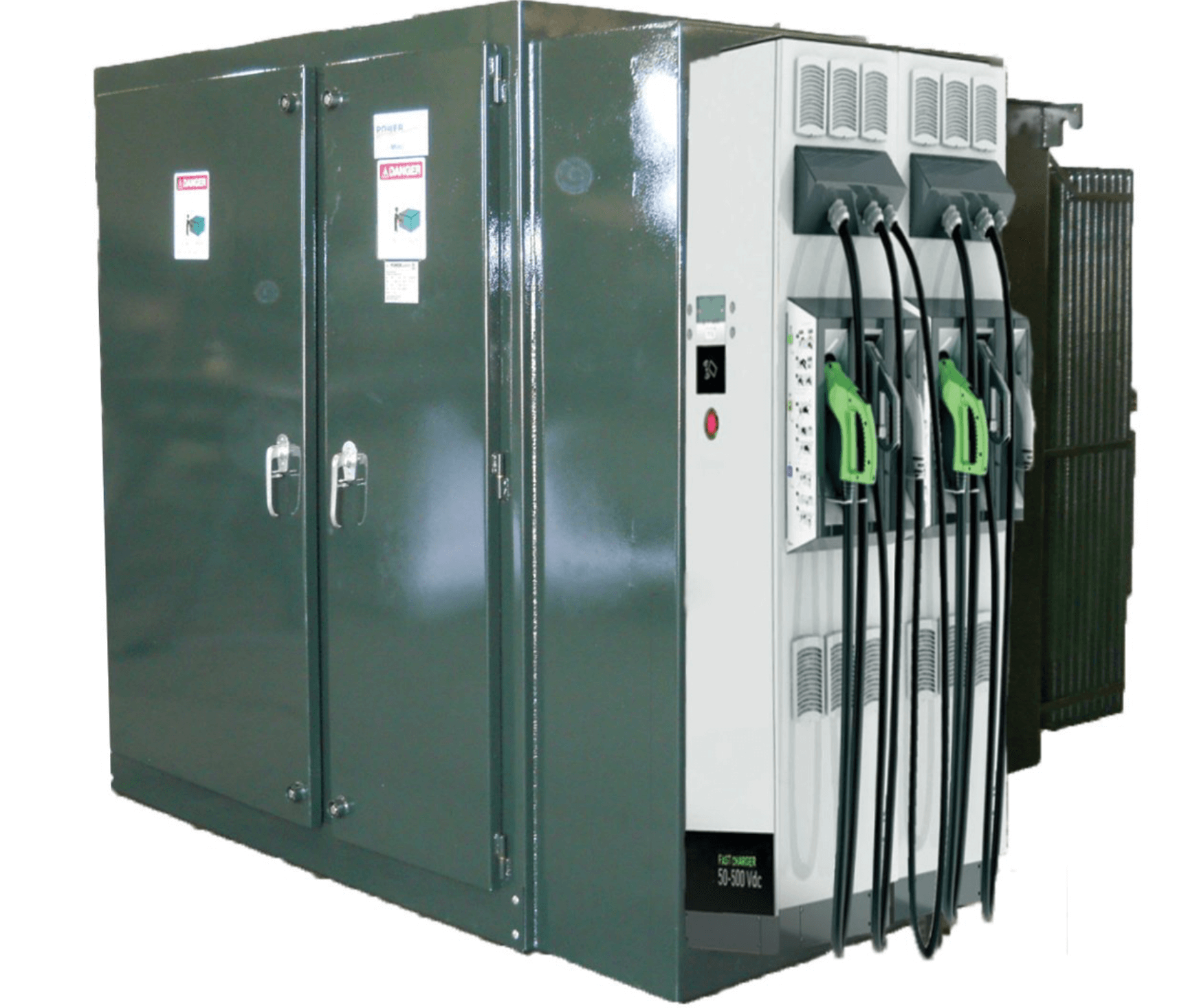
Free-standing EV charger enclosure
Also, they can be big enough to be categorized as walk-in enclosures that allow a fully-grown adult to enter the cabinet.
Floor-mounted means that the EV charger enclosure is screwed into the floor or ground—it is completely stationary and fixed.
Pad-mounted enclosures are very similar to floor-mounted.
They have special pedestals or feet for secure installation into pavement, concrete, or ground.

Pad-mounted EV charger enclosure
Wall-mounted EV charger enclosures use mounting brackets, screws, and pads for installation onto a wall.
They can also be recessed into the wall, and are perfect for residential EV charging applications.
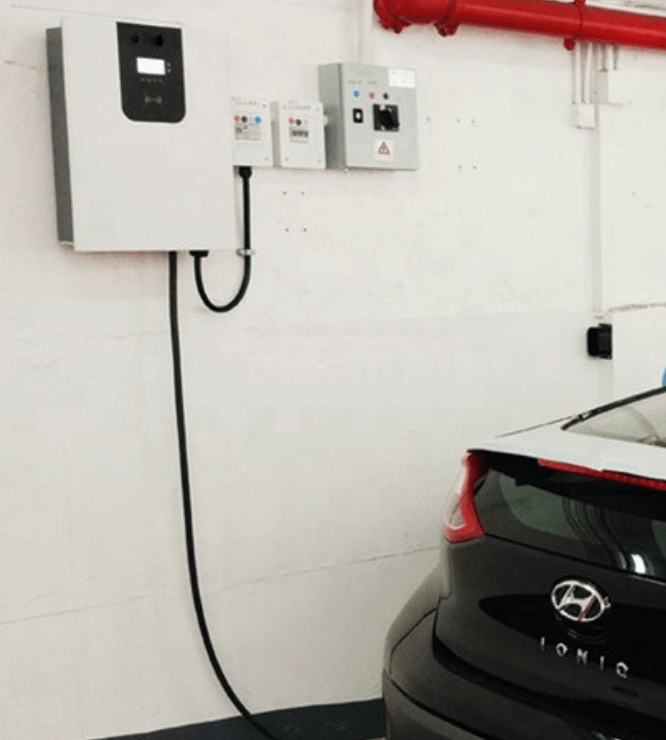
Wall-mounted EV charger enclosure
Tower-mounted enclosures are also similar to wall-mounted enclosure cabinets, but these are attached to thin tower poles.
Also, towers may mean electrical towers or poles specifically installed to hold the enclosure.
Pole-mounted EV charger enclosures are similar to wall-mounted ones, but they are attached to a pole using circular brackets.

Pole-mounted EV charger enclosure
This is also common at workplaces and commercial fuel retails.
Choosing the right mode of installation requires certain features, such as brackets or lifting eyes.
KDM professionals can advise you on the mounting method best suited for your application.
What configurations do EV charger cabinet enclosures come in?
You can choose any configuration for your EV charger enclosure.
Configurations are customized using racks, dividers, inner compartments, and separate doors.
All these can be customized for your application.
For instance, you may choose to have a compartment for the charging device separate from a compartment for the main cable.
This is especially useful if you have a large enclosure meant for multi-user EV charging.

Compartments in an EV charger enclosure
Naturally, we also have our custom enclosures, which can be of any design, shape, and requirements, as well as have multiple doors.

Custom EV charger enclosure
Also, we can manufacture EV charging stations of any shape—with cutouts, cylindrical, etc.
EV charger enclosures with cutouts mean that there are decorative empty frame-like elements at the top of the enclosure.
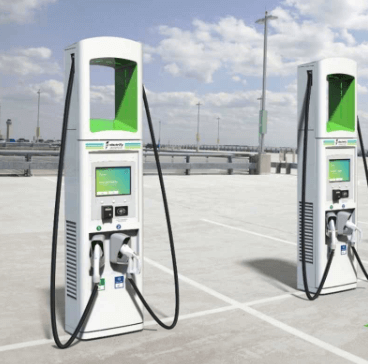
Decorative EV charger enclosure shape
Cylindrical charger enclosures are also decorative and add a futuristic aesthetic to your business.

Cylindrical EV charger enclosure
You can request any feature to better suit your work environment.
We are happy to create your perfect custom KDM EV charger enclosure!
What coatings can EV charger enclosures have?
We offer anodizing, alodining, passivation, electropolishing, and powder coatings.
Anodizing coating uses anodes to oxidize a metal—usually aluminum—to improve its resistance to corrosion.
Alodine coating, also known as the chromate conversion coating, is used to prime steel and aluminum for paint and improve the metal’s resistance to corrosion.

Alodine coating
Passivation is the creation of an outer layer of metal oxide to act as a shield against corrosion.
Electro-polishing is an electrochemical process that smoothes out the metal and improves the surface finish.
There can also be anti-graffiti and anti-poster coatings to protect your outdoor EV charger enclosure from vandalism.
Powder-coated EV charger box enclosures can be of any colour, texture, and finish (glossy or matte).
Powder-coating also improves resistance to corrosion.

Powder-coated EV charger enclosure
You can also choose wet coating, or paint, but it is becoming less popular.
We can provide any coating in any color and finish, so contact us today!
Can EV charger enclosures be silk-screened or engraved?
Our customizing services include engraving and silk-screening.
You can easily customize your EV charger enclosures with these options.
Silk screening is an easy and cost-effective method.
Any flat side of the EV charger box enclosure can be silk-screened with labels, warnings, directions for use, serial number, your company name, and logo.

Silk-screened EV charger enclosure
In silk-screening, a thin layer of paint is transferred onto the EV charger surface.
During engraving, about 0.005 inches or 0.010 inches of metal is removed from the surface.
The requested symbol is basically scratched into the surface.
Once the metal has been removed, it is filled in with epoxy paint of any color to match your requirements.
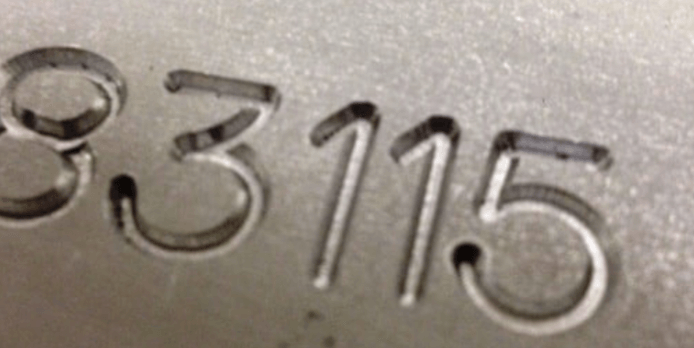
Engraved EV charger enclosure
Do EV charger enclosures need maintenance?
EV charger enclosures rarely need maintenance, but some maintenance may be required.
Firstly, electric vehicle chargers would most definitely need maintenance, so installing an access panel into the enclosure is crucial.
As for the enclosure itself, it may need some routine cleaning and reapplication of a UV-resistant wax to prolong the life of powder-coating, if the enclosure has any.
Also, the hinges may need maintenance once in a while, as well as any LCD monitors, and LED indicators.
Gaskets may be inspected sometimes to ensure that they are still flexible, not brittle, and have not shrinked.


